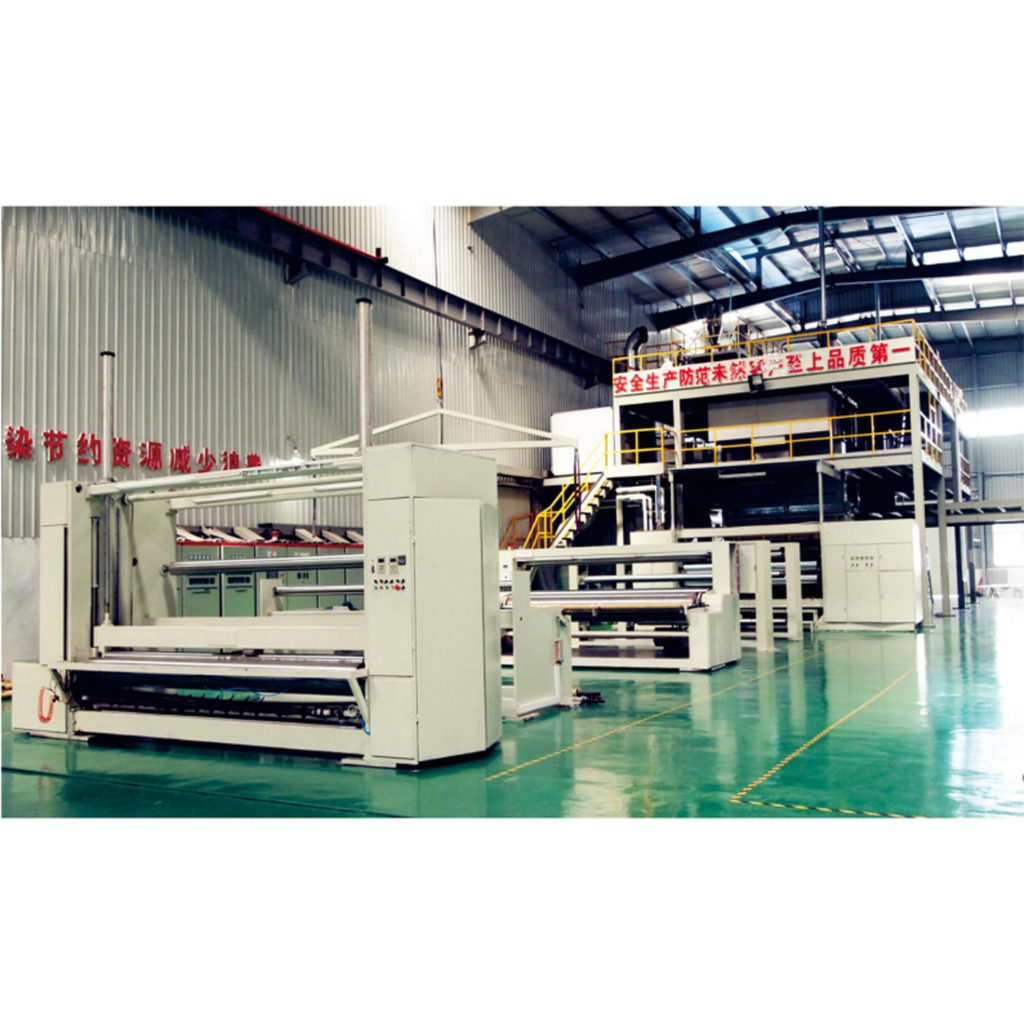La tela no tejida Spunbond se crea utilizando máquinas especializadas que extruyen y colocan filamentos continuos para formar una red no tejida.. El proceso spunbond produce telas no tejidas con orientación aleatoria de los filamentos., Ideal para muchas aplicaciones que requieren fuerza y resistencia a la abrasión..
Los tipos principales de máquinas utilizadas para la producción de telas no tejidas spunbond son:
Extrusoras de hilera:

La resina polimérica se funde y se extruye a través de finos orificios llamados hileras para formar filamentos continuos.. Las hileras pueden tener miles de agujeros para producir muchos filamentos simultáneamente en forma de cortina o cinta..
Hornos de dibujo:
Los filamentos extruidos pasan a través de sistemas de aire caliente que enfrían y alargan los filamentos., haciéndolos más delgados y uniformes. Este estiramiento aumenta la resistencia y las propiedades mecánicas de los filamentos..
Cabeza de acostado:
Los filamentos estirados se depositan sobre una cinta móvil utilizando un cabezal de disposición que controla la densidad y la geometría del filamento.. Los filamentos aterrizan en una orientación aleatoria., convirtiéndose en la red no tejida.
Calendarios de área consolidada:
La tela no tejida suelta pasa a través de calandras calentadas para unir los filamentos en los puntos de cruce.. Este entrelazamiento mantiene unida la red y le da resistencia e integridad a la tela..
Bobinadora y rollos:
La red de tela no tejida terminada se enrolla en rollos grandes para su almacenamiento., transporte, y procesamiento posterior. También se pueden realizar operaciones de acabado secundarias como punzonado con chorro de agua..
Máquina para fabricar telas no tejidas Spunbond controla con precisión la formación de filamentos, establecer, vinculación, y enrollado para producir fuerte, bandas no tejidas uniformes ideales para telas, toallitas, geotextiles, y batas y cortinas médicas. Las líneas modernas de spunbond cuentan con tecnologías avanzadas para un mayor rendimiento, propiedades web consistentes, y reducción del consumo de energía.
